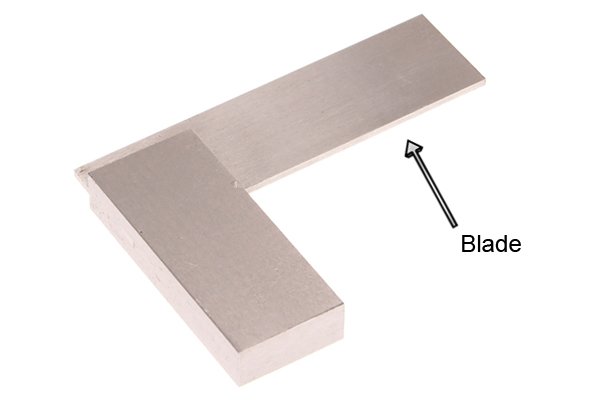
What parts does the engineer's square consist of?
Drain | ||
 | On most engineering squares, the stock is the shorter, thicker part of the tool, allowing the engineering square to sit unaided on a flat surface with the blade in a vertical position, freeing the user's hands. The stock also allows the user to place the tool against the edge of the workpiece and use the blade as a guide to mark lines at right angles to the edge of the workpiece. | |
Blade | ||
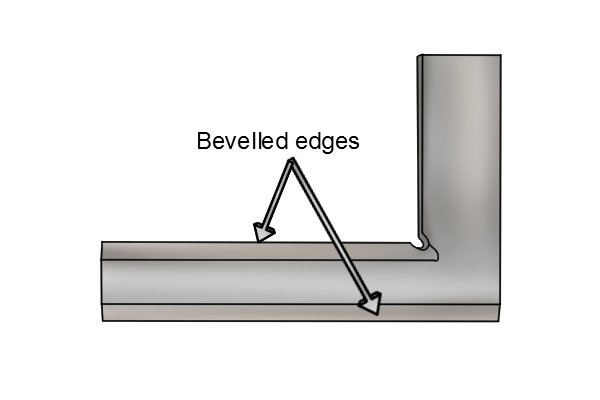 | On most engineering squares, the blade is the longer, thinner part of the tool. The blade is inserted into the end of the stock, with the outer edge of the blade protruding from the end of the stock. On sapper squares that do not have a stock, the blade is thicker. The inside edge of an engineer's square blade can be 50 mm (2 in) to 1000 mm (40 in) long. | |
groove | ||
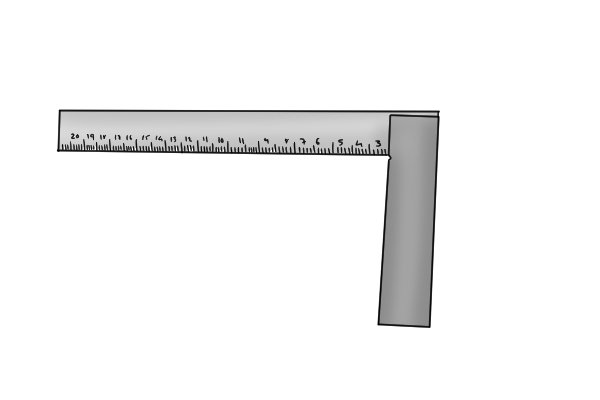 | A groove or notch is a semi-circle cut from a stock or blade at the point where their inner edges meet. The groove prevents chips, dirt or sand from getting between the square and the workpiece at this critical point. By preventing this, the groove helps reduce the risk of inaccuracies when checking the workpiece squareness. The groove also helps prevent inaccurate measurement of the angle of a metal workpiece if there is a burr on its edge. | |
Additional features | ||
 | Beveled edgesBeveled edges are found only on engineering squares that do not have a stock. Because the blade of these engineered squares is thicker, the bevelled edge helps to reduce the contact patch (the area of the workpiece in contact with the tool), allowing the user to visually check any light between the edge more quickly and accurately. workpiece and blade edge to determine if the workpiece is square. | |
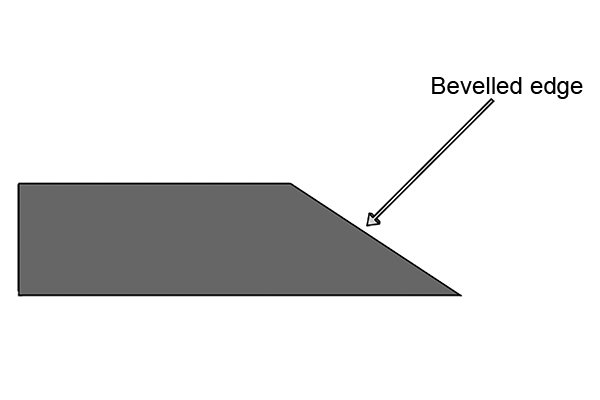 | A beveled edge is a face that is at an angle to other sides, not square (at right angles) to them. | |
 | Graduation marksGraduation marks are measurement marks, most often placed along the blade of an engineering square. They allow you to measure the length of the line you want to draw on your workpiece without a ruler. Graduation marks are useful because trying to hold the engineer's square and straightedge exactly in place while drawing a line on the workpiece can be a challenge. | |
 | Graduated marks are more common on engineering squares that do not have a stock. They can be either imperial or metric, and some squares may have imperial graduations on one edge and a metric scale on the other. | |
 | ||
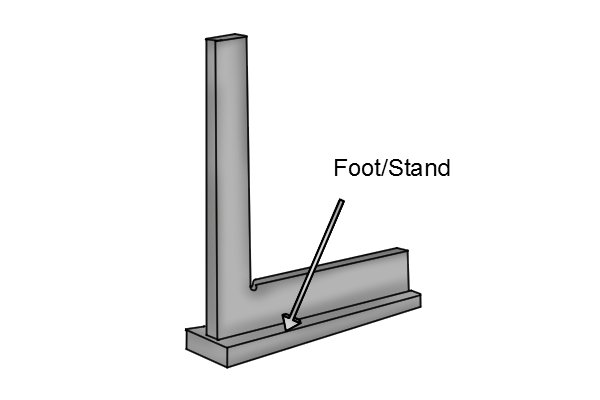 | FootThe leg or stand is a feature of some engineering squares that do not have a stock. The foot helps the square stand upright when checking the squareness of the workpiece. | |

